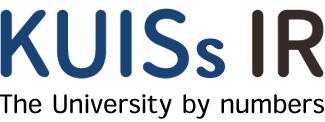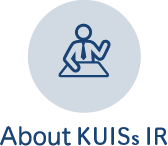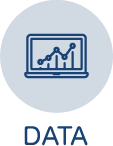How to understand the 'educational capacity of universities'?
Translation : Hamana Atushi (2018). Meeting the Challenges of Learning Outcomes-based Education. Toshindo: Tokyo. Chapter 5, Section 1
How to understand the 'educational capacity of universities'?
The educational capacities of Japanese universities are under scrutiny. Internationally as well, the educational capacities of universities has received much attention, especially with regards to the need to further raise the learning outcomes of students. On the other hand, from the standpoint of transparency and the university's role as serving the public, it is also incumbent on institutions to explain and verify the extent of learning outcomes.
So how do we understand the idea of "the education capacity" of universities and how do we measure and evaluate it? It is an important issue when thinking about the future of higher education.

-
Let me recount an anecdote from a symposium of the Japanese University Education Association that I recently participated in. Specifically, I was a designated commentator of four researcher reports at the 2016 annual meeting at Ritsumeikan's Osaka campus. The panelist topics included Tsukuba University's Yoshitake Hiromichi's research on university management, Meiji University's Yamamoto Koichi's report on institutional research and staff responsibilities towards student learning, Waseda University's Hikono Kanya's report on making learning results visible in educational practice, and Osaka University's Sato Hiroki's report on educational development in higher education. The common theme of the conference was "Expanding the educational capacities of universities: What capacities are required by universities to be able to deliver needed educational outcomes?" However, I wanted to focus on an even more concrete issue, namely "What did the data tell us about those universities that were able to expand there educational capacities?"
An Organizational Approach to "The Educational Capacity of Universities"
The first report by Yoshitake Hiromichi focused on university administration. He explored the issue from an organizational perspective, looking on those conditions found in institutions with educational capacity. In particular, the professor focused his attention on the paradox that, despite the fact that Japanese higher education has long been aware (since at least the 1971 report of the Central Educational Deliberative Council) of the governance and management issues that hinder universities' educational functions, universities have proven unable to enact meaningful reform on their own. Using the organizational theories of American scholars Chester Barnard and Herbert Simon as a touchstone, he explored the reasons for why Japanese universities have proved unable to move forward. In particular, he argued that without addressing the organizational ambiguity within these organizations, university reform seemed unlikely to advance.
Professor Yoshitake further argued that Japanese university stakeholders have long lacked a shared sense of organizational purpose, stemming from a lack of discussion over the institution's very strengths and weaknesses -in other words underlying raison d'etre. In order to escape this current state of affairs, he concluded, the establishment of new modes of governance and management were the only way forward. In particular, he argued that it is necessary to build a new organizational structure linking stakeholders, faculty and staff. Moreover, he concluded that in order to insure full participation of different constituencies, it is essential to have a management approach based on encouraging three components: "curiosity" "critical thinking" and "active motivation."

-
Professor Yoshitake further argued that Japanese university stakeholders have long lacked a shared sense of organizational purpose, stemming from a lack of discussion over the institution's very strengths and weaknesses -in other words underlying raison d'etre. In order to escape this current state of affairs, he concluded, the establishment of new modes of governance and management were the only way forward. In particular, he argued that it is necessary to build a new organizational structure linking stakeholders, faculty and staff. Moreover, he concluded that in order to insure full participation of different constituencies, it is essential to have a management approach based on encouraging three components: "curiosity" "critical thinking" and "active motivation."
In response to this presentation, I raised three points. The first question focused on the establishment of organizational purpose. It is an important and fresh insight to look at universities' educational capacities from an organizational perspective; however, but in order to establish shared goals across an institution, how should one communicate/realize this? If the establishment of shared goals is so essential to reform success, then solving this issue is of particular importance. Did he have any particular tips and advice for this?
My second question focused on the issue of university stakeholders. The report primary focused on the unidirectional nature of the relationship between stakeholders and universities, particularly as laid down and specified by law. However, I wondered if ignoring the mutual nature of the relationship of stakeholder and universities could potentially overlook the potential virtuous cycle of mutual growth between individuals and organizations.

-
My third question focused on the report's idea of learning outcomes (as related to broader educational reforms), particularly its use and understanding of the term "competencies." I wanted to confirm what his understanding was --did he mean it as behavioral characteristics leading to desired outcomes? His response demurred from specifying whether it was exactly this specific understanding of competency.
In order to raise the educational capacity of institutions, how should one organize the university? What is the way of organizing so that such capabilities can be increased? And in order to accomplish this, what are the goals that should be articulated The fact that he did not choose simply quantitative measures of performance is indeed significant.
At the same time, in reflecting on how organizational practices such as the use of Key Performance Indicators (KPI) have emerged just as Japanese business have struggled more generally, indicates how urgent the need has become to measure organizational capabilities. Moreover, there is the danger that all universities will adopt to the same benchmarks of "curiosity" and "deep thinking." And within an organization, defining, measuring and verifying "educational capacity," while important is also hard to realize in practice. Similarly, there remains the issue of developing enough leadership talent in universities that can facilitate, coordinate, push forward and encourage necessary initiatives. The issue of human resource development seems particularly important. At the same time, one can also feel the deep sense of crisis raised by this organizational approach and its analysis over the ambiguity of goal setting and lack of leaders among university organizations.
Building Educational Capacity through Data Analysis
Yamamoto Koichi's presentation was entitled "The responsibility of staff in learning management and institutional research."
As a administrative staff in charge of learning support and institutional research, Yamamoto's presentation provided a practitioner based view of how to use IR data analysis to educational capacity issues. To borrow Yamamoto's own words, how can the "realization of internal quality assurance" can be used as framework to mobilize university staff to support the an institution's educational capacity? Additionally, what are the issues related to carrying out such data analysis?
For Yamamoto's research, "educational capacity" was most directly related to the operational aspects of educational reform. From the standpoint of an IR specialist, the content was deeply meaningful and filled with many expert insights. In response to his presentation I raised three questions.

-
The first question centered on the issue of measurement and assessment indicators and its relationship to learning outcomes. One can use different concepts such as resultative outputs, direct outcomes and final outcomes. However, in actual practice, what are the measurements that should be used for this. What is the method of measurement that should be adopted? Moreover, what IR data should be used as the key indicators and what parts should it be correlated to?
The second question focused on the validity of assessment indicators. In conducting cluster analysis of universities by type, one often creates proxy/aggregate indexes. However, these proxy indexes while "measurable" in a mathematical sense are not always valid. For example, the accrediting agency, Japan University Accreditation Association, has designated some combined indicators as proxy indicators for overall "educational capacity." Yet, it is still not fully clear what these proxy indicators are actually explaining when used to compare the "educational capacity" of different institutions. It seems more explanation is still necessary doesn't it not?
Finally, my last question centered on the unit of measurement and evaluation of educational capacity. What is the best unit of measurement to effectively evaluate educational capacity? Should it be at the level of entire universities? Of faculties? Of departments? I inquired about this issue. For me, I think that degree programs, ie. faculties and departments have many differences. If reform is not taken at this level, I wonder if a university's educational capacity can actually be raised.
Dr. Yamamoto noted that his research was not able to look at changes in students this time around. He did say that he will try to focus in on the educational capacity at the department level as well as special programs.









